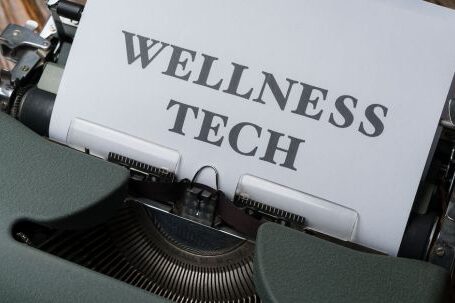In recent years, wearables have become increasingly popular, with people using them for a variety of purposes, from fitness tracking to sleep monitoring. While these devices offer convenience and accessibility, many are left wondering if there are wearables available that can provide medical-grade health monitoring. In this article, we will explore the current state of wearables in the healthcare industry and discuss the potential for medical-grade monitoring.
The Rise of Wearables
Wearable devices have revolutionized the way we track and monitor our health. From smartwatches to fitness trackers, these devices have become a staple in many people’s lives. They offer a range of features, including heart rate monitoring, step counting, and sleep tracking. However, while they provide valuable insights into our overall health and well-being, they are not considered medical devices.
The Limitations of Consumer-Grade Wearables
Consumer-grade wearables, such as fitness trackers, are designed for general health and wellness purposes. While they can provide useful information, they are not intended to diagnose or treat medical conditions. This is due to several factors, including the accuracy of the sensors used and the lack of regulatory oversight. Consumer-grade wearables may provide an estimate of your heart rate or sleep patterns, but they cannot provide the level of accuracy and reliability required for medical purposes.
The Potential for Medical-Grade Monitoring
Despite the limitations of consumer-grade wearables, there is great potential for the development of medical-grade monitoring devices. In recent years, there have been significant advancements in sensor technology, allowing for more accurate and reliable measurements. Additionally, regulatory bodies, such as the U.S. Food and Drug Administration (FDA), have started to establish guidelines for the development and approval of medical wearable devices.
Medical-Grade Wearables in Practice
While medical-grade wearables are still in the early stages of development, there are some examples of devices that are making waves in the healthcare industry. One such example is the ECG (electrocardiogram) feature on the Apple Watch Series 4 and later models. This feature allows users to take a single-lead ECG, providing valuable information about their heart rhythm. Another example is the Dexcom G6 continuous glucose monitoring system, which allows individuals with diabetes to monitor their blood glucose levels continuously.
Challenges and Future Outlook
While the potential for medical-grade wearables is promising, there are several challenges that need to be addressed. One of the main challenges is ensuring the accuracy and reliability of the measurements. Medical-grade devices need to meet strict standards to ensure that the information they provide is accurate and can be used for diagnosis and treatment decisions. Another challenge is the integration of wearable data into existing healthcare systems and workflows. Healthcare professionals need to be able to access and interpret the data in a meaningful way.
In conclusion, while there are currently limitations to the capabilities of wearables for medical-grade health monitoring, the future looks promising. With advancements in sensor technology and increased regulatory oversight, we can expect to see more medical-grade wearables enter the market. These devices have the potential to revolutionize healthcare by providing individuals with valuable insights into their health and enabling healthcare professionals to make more informed decisions. However, it is crucial to ensure that these devices meet the necessary standards and are integrated effectively into existing healthcare systems. Only then can wearables truly become a powerful tool in medical monitoring.




